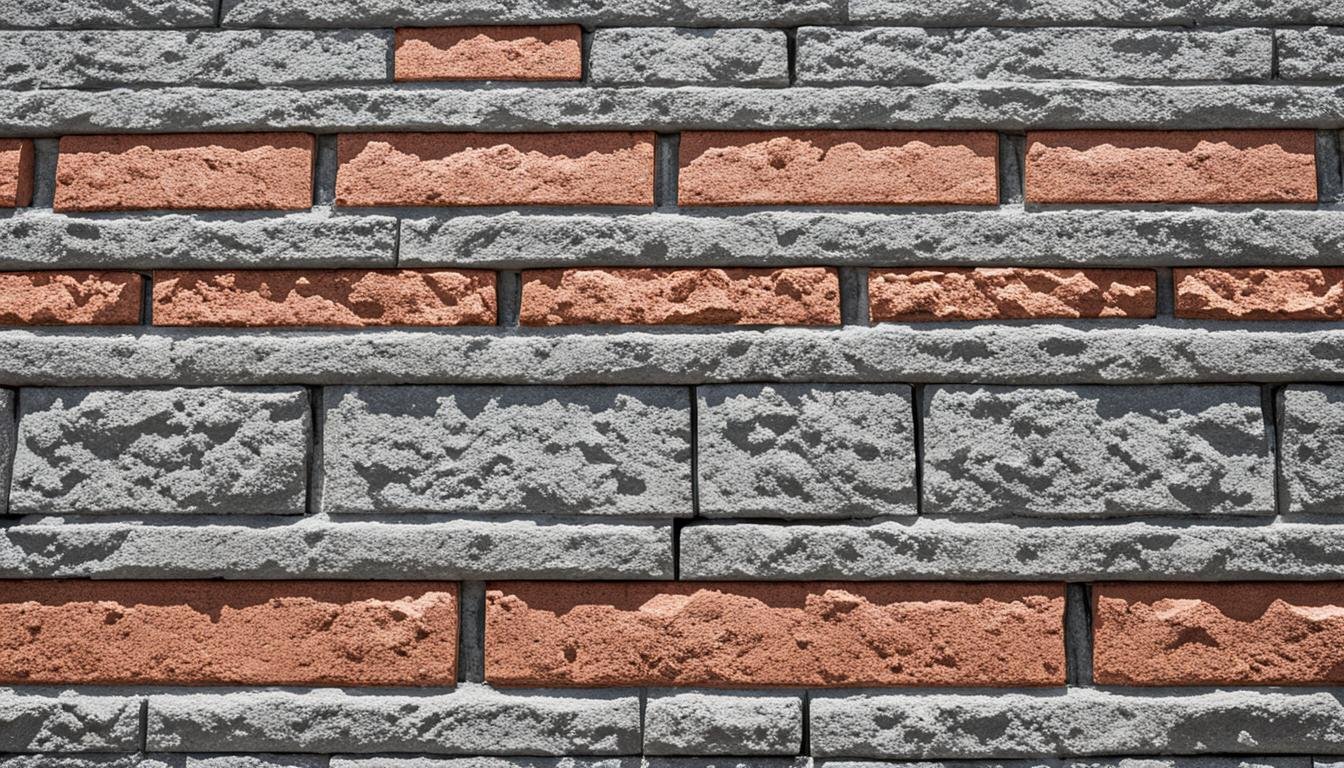Construction projects rely on top-quality building materials for durability and sustainability. When it comes to architectural design, the choice of materials plays a crucial role in creating structures that are not only functional but visually appealing. In this article, we will dive into the world of architectural materials and explore the innovative choices that architects have at their disposal.
Key Takeaways:
- Architectural materials are essential for constructing durable and sustainable buildings.
- Choosing the right materials can create future-forward designs that are visually stunning.
- Innovative architectural materials offer sustainable solutions for reducing environmental impact.
- Architects have a wide range of building blocks to choose from, allowing for versatile design options.
- The use of eco-friendly materials contributes to sustainable building practices.
Types of Architectural Blocks
Architectural blocks come in various types, each offering unique characteristics and aesthetics. From solid blocks to recycled architectural concrete blocks, there is a wide range of options to choose from for different construction projects.
Solid Blocks
Solid blocks are ideal for load-bearing walls and projects that prioritize enhanced security. These blocks are made of dense concrete, providing strength and durability for long-lasting structures.
Hollow Blocks
Hollow blocks are lightweight and cost-effective during manufacturing. Their hollow cores make them easier to lift and handle, reducing labor and transportation costs. These blocks are commonly used in non-load-bearing walls and partitions.
Polished Face Blocks
Polished face blocks provide a sleek and glossy finish that resembles polished marble or granite. These blocks add a touch of sophistication and elegance to both the exterior and interior of a building.
Split Face Blocks
Split face blocks offer a rugged appearance and superior strength, making them suitable for both load-bearing and non-load-bearing walls. These blocks feature a textured finish, creating a distinctive aesthetic.
Ground Face Blocks
Ground face blocks have a smooth finish and a high level of moisture resistance. These blocks are known for their excellent sound reduction properties, making them ideal for projects that require acoustic insulation.
Antique Finish Blocks
Antique finish blocks have a weathered and rustic texture, adding a unique charm to buildings. These blocks give a sense of timeless beauty and are often used to create a vintage or nostalgic look.
Recycled Architectural Concrete Blocks
Recycled architectural concrete blocks are an eco-friendly choice for sustainable building practices. These blocks are made with recycled content and can contribute to LEED certification for environmentally conscious construction projects.
Monarch Blox
Monarch Blox provide the durability of concrete with the appearance of clay bricks. They offer a classic and timeless aesthetic, adding warmth and character to any building design.
Benefits of Architectural Blocks
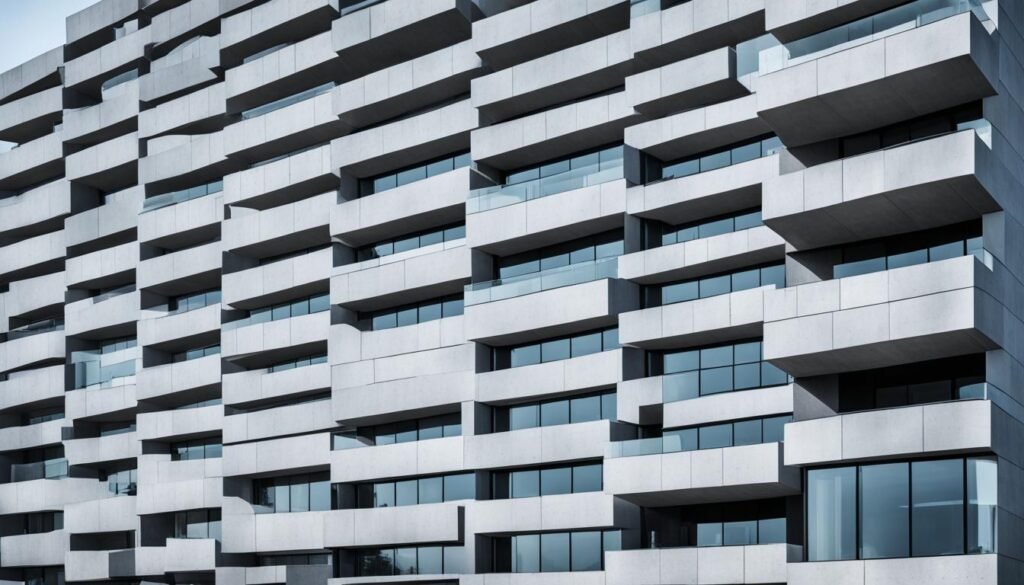
Architectural blocks offer a multitude of benefits that make them an excellent choice for construction projects. Let’s explore some of these key advantages:
Durability
One of the primary benefits of architectural blocks is their exceptional durability. These blocks are designed to withstand various environmental conditions, ensuring long-lasting structures that can endure the test of time. Whether it’s extreme temperatures, moisture, or heavy loads, architectural blocks provide the strength and resilience necessary for durable constructions.
Moisture Resistance
Architectural blocks offer excellent moisture resistance, protecting your building from water damage. The inherent properties of these blocks help prevent moisture infiltration and maintain the integrity of the structure. Whether you’re constructing a basement, a bathroom, or any area prone to water exposure, architectural blocks provide peace of mind by mitigating the risks associated with moisture.
Soundproofing Properties
Another significant benefit of architectural blocks is their soundproofing capabilities. These blocks effectively reduce noise transmission between rooms or from external sources, creating a quieter and more comfortable environment. Whether you’re constructing a residential space, an office building, or a hotel, the soundproofing properties of architectural blocks contribute to a peaceful and tranquil atmosphere.
Sustainable Building
Architectural blocks align with sustainable building practices by utilizing eco-friendly materials and reducing carbon footprint. These blocks can be made from recycled concrete, contributing to the reuse of materials and reducing waste. By incorporating architectural blocks into your construction projects, you’re taking a step towards creating more sustainable buildings and promoting a greener future.
Aesthetics
In addition to their functional advantages, architectural blocks also offer aesthetic appeal. These blocks come in a variety of textures, colors, and sizes, allowing architects and designers to achieve visually striking and aesthetically pleasing designs. Whether you’re aiming for a modern, industrial look or a classic, timeless style, architectural blocks provide endless possibilities for creating visually captivating spaces.
With their durability, moisture resistance, soundproofing properties, sustainability, and aesthetic versatility, architectural blocks prove to be an excellent choice for construction projects across various industries.
Use Cases for Architectural Blocks

Architectural blocks offer a versatile and practical solution for a wide range of construction projects. Their durability, aesthetic appeal, and flexibility make them a popular choice among architects and builders. Let’s explore some of the common use cases for architectural blocks:
Commercial Buildings
Architectural blocks are widely used in the construction of various commercial buildings. They provide a sturdy foundation and structural support for structures such as shopping centers, office buildings, and retail centers. The blocks’ durability and ability to withstand different weather conditions make them an ideal choice for commercial projects.
Residential Spaces
Architectural blocks can enhance the aesthetics and functionality of residential spaces. Whether used for the construction of apartment complexes or individual houses, these blocks provide reliable structural support and design versatility. From load-bearing walls to foundation construction, architectural blocks offer durability and longevity for residential buildings.
Museums
Architectural blocks are often used in the construction of museums. The blocks’ strength and resistance to moisture make them suitable for preserving valuable artifacts and maintaining a controlled environment. Museums require structures that can withstand heavy foot traffic and ensure optimal security, making architectural blocks an excellent choice.
Schools
Architectural blocks are commonly used in the construction of educational institutions. From elementary schools to universities, these blocks provide a solid foundation and structural integrity required for learning environments. The blocks’ soundproofing properties contribute to a quiet and conducive learning atmosphere.
Hotels
Hotels require structures that can withstand frequent occupancy and provide a comfortable stay for guests. Architectural blocks meet these requirements with their durability and moisture resistance. Whether used for the entire building or specific areas such as the foundation or walls, these blocks ensure a high-quality and long-lasting construction.
Office Buildings
Architectural blocks are an excellent choice for office buildings due to their strength and soundproofing properties. These blocks create a quiet work environment, reducing distractions and enhancing productivity. Office buildings constructed with architectural blocks offer a professional and aesthetically pleasing space for businesses.
Retail Centers
Architectural blocks are extensively used in the construction of retail centers, including shopping malls and individual retail stores. The blocks’ versatility allows for creative architectural designs, attracting customers and enhancing the visual appeal of these retail spaces.
| Use Case | Description |
|---|---|
| Commercial Buildings | Shopping centers, office buildings, retail centers |
| Residential Spaces | Apartments, houses |
| Museums | Preserving artifacts, controlled environments |
| Schools | Elementary schools, universities |
| Hotels | Durable, comfortable for guests |
| Office Buildings | Professional, soundproof |
| Retail Centers | Shopping malls, retail stores |
Architectural blocks offer endless possibilities for construction projects, providing reliable durability, aesthetic appeal, and design flexibility. Whether it’s a commercial building, a residential space, or a cultural institution, architects and builders can rely on architectural blocks to deliver exceptional results.
Coating Options for Architectural Blocks
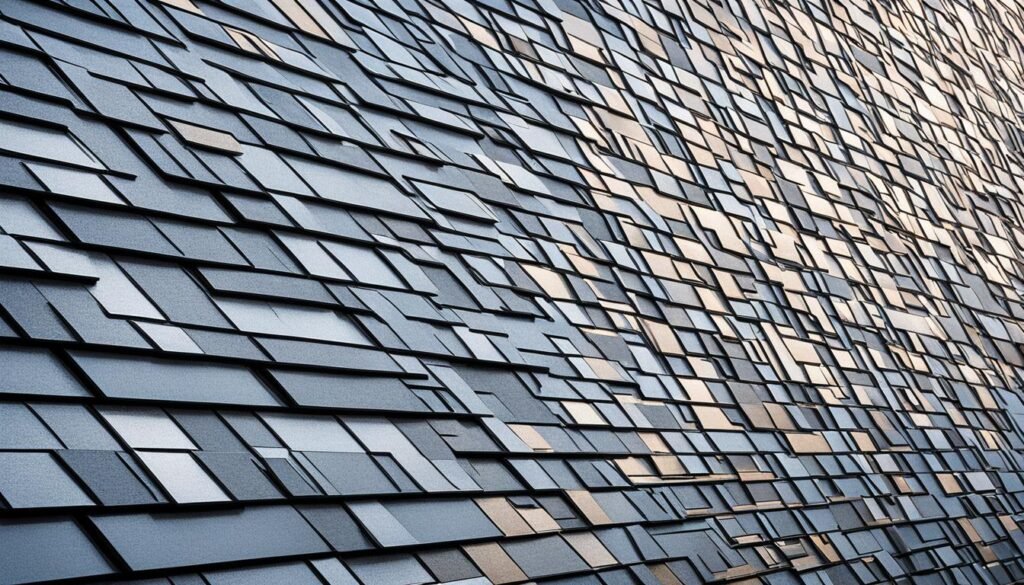
Architectural blocks offer durability and versatility for construction projects. To enhance their performance and protect them from water damage, various coating options are available. These coating options include:
Cement Paints
Cement paints provide a durable and cost-effective coating solution for architectural blocks. They offer excellent adhesion, breathability, and weather resistance. Cement paints are available in a wide range of colors, allowing architects and builders to create visually appealing designs.
Epoxy
Epoxy coatings are known for their high strength, chemical resistance, and durability. They can provide a smooth and seamless finish, protecting the architectural blocks from moisture and abrasion. Epoxy coatings are commonly used in industrial and commercial applications where enhanced protection is required.
Latex Paints
Latex paints are a popular choice for coating architectural blocks due to their ease of application, fast drying time, and excellent resistance to cracking and peeling. They offer good color retention and can be applied to both interior and exterior surfaces. Latex paints are available in a wide range of finishes, including flat, eggshell, and semi-gloss.
Oil-based Paints
Oil-based paints provide a durable and glossy finish for architectural blocks. They offer excellent adhesion and are resistant to wear and tear. Oil-based paints are known for their long-lasting performance and are often used in high-traffic areas. However, they may take longer to dry compared to other coating options.
Water-repellant Coatings
Water-repellant coatings are designed to protect architectural blocks from water infiltration while allowing them to breathe. These coatings create a barrier against moisture, preventing damage caused by water absorption. Water-repellant coatings are particularly beneficial for buildings located in humid or rainy climates.
The choice of coating depends on several factors, including the block’s function, its location, and the desired level of breathability and sunlight resistance. Architects and builders can select the most suitable coating option based on their project requirements. By applying these coatings, the durability and appearance of architectural blocks can be maintained, ensuring their long-term performance.
Innovative Architectural Materials for Design Exploration

Architects are constantly seeking out innovative materials to push the boundaries of design exploration. These materials offer new possibilities and challenge traditional notions of architecture. One notable set of tools that facilitates design experimentation is ARCKIT, an architectural set that allows architects, as well as children and teens, to bring their design ideas to life.
ARCKIT provides tangible blocks and components that can be used to create and experiment with architectural concepts. This hands-on approach to design allows architects to explore different ideas, test out structural concepts, and visualize the spatial qualities of their designs. By utilizing ARCKIT, architects can quickly prototype and iterate their ideas, allowing for more efficient and informed decision-making throughout the design process.
There are also architects who have embraced the use of found materials and building blocks to explore innovative design possibilities. One such architect is Sou Fujimoto, known for his experimental and nature-inspired designs. Fujimoto often incorporates unconventional materials into his projects, blurring the line between architecture and nature.
“I believe architecture is not about geometry, but about human beings. I try to look at the relationship between the human body and the space to create with minimum material a [maximum] effect.”
Another architect pushing the boundaries of design exploration is Rozana Montiel. Montiel’s work often involves repurposing found materials to create unique architectural interventions. By giving new life to these materials, Montiel challenges traditional design practices and encourages a more sustainable approach to architecture.
Design exploration with innovative architectural materials not only allows architects to create unique and inspiring spaces but also drives innovation within the industry as a whole. Through their experimentation, architects like Sou Fujimoto and Rozana Montiel inspire others to think outside the box and consider new possibilities for architectural design.
By embracing materials such as ARCKIT and exploring the use of found materials, architects can continue to push the boundaries of design and create buildings that amaze and inspire.
Historical Perspective on Architectural Models

Architectural models have played a significant role in the history of architecture, serving as a valuable tool for visualizing and translating abstract ideas into tangible forms. Throughout the centuries, architects and scholars have recognized the importance of these models in the design and construction process.
Leon Battista Alberti and the Importance of Models
One of the earliest proponents of architectural models was Leon Battista Alberti (1404-1472), an Italian Renaissance architect and author. Alberti emphasized the importance of models as a way to communicate and refine architectural concepts.
“The noblest pleasure is the joy of understanding.”
Alberti viewed models as a means to bridge the gap between the imagination of the architect and the physical realization of a building. By creating a three-dimensional representation, architects can better understand the form, proportions, and spatial relationships of a structure.
Vitruvius and the Inspiration from Callimachus
Vitruvius (80-15 BC), a Roman architect and engineer, also recognized the significance of architectural models. In his influential treatise on architecture, Vitruvius recounted a story about an architect named Callimachus.
“For he observed that the stalks of acanthus differ in no way from the stalks of a basket”
According to Vitruvius, Callimachus was inspired by the form of an acanthus plant and a basket, which led him to create the Corinthian column capital. This story demonstrates that architectural models can serve not only as representations of preconceived ideas but also as a source of inspiration for new designs.
Spolia: Incorporating Existing Elements
In addition to models, architects throughout history have also incorporated existing architectural elements into new structures. This practice, known as “spolia,” involves reusing and repurposing stones, columns, and other fragments from older buildings.
Spolia not only provided a cost-effective solution for builders but also allowed for the preservation and recontextualization of historical architectural elements. By incorporating these elements into new designs, architects created a seamless connection between past and present, while adding a sense of richness and depth to their creations.
| Architect | Influence |
|---|---|
| Leon Battista Alberti | Emphasized the importance of architectural models as a tool for translating ideas into tangible form. |
| Vitruvius | Shared the story of Callimachus, showcasing how architectural models can inspire new designs. |
| Spolia | Architects incorporated existing architectural fragments into new structures, preserving the past while building for the future. |
Architectural Models as Inspiration for Design
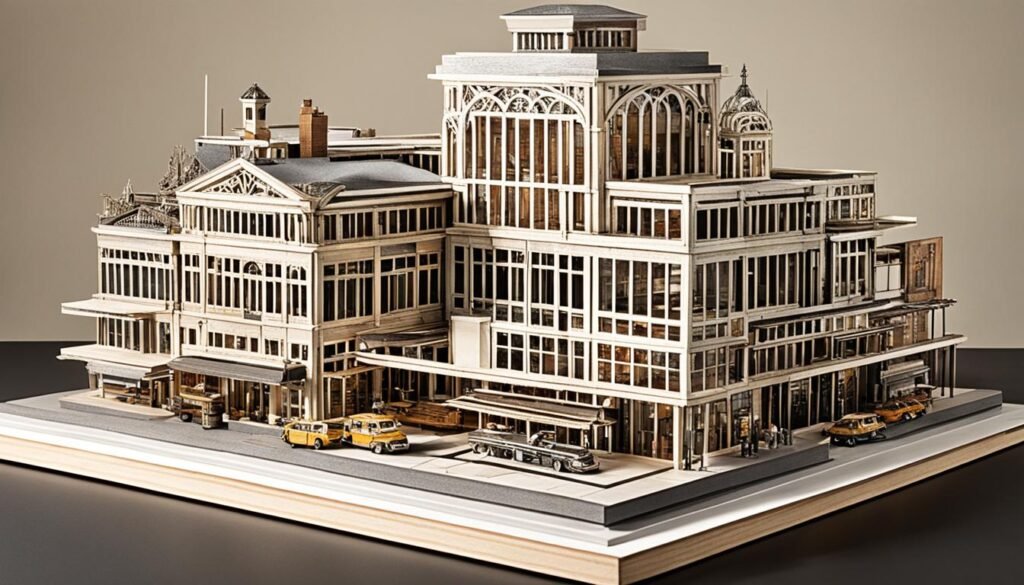
Architectural models have long served as a source of inspiration for designers, allowing them to explore new ideas and push the boundaries of conventional design concepts. In the realm of architecture, pioneers such as Hermann Finsterlin, Walter Gropius, and Kurt Schwitters have leveraged building blocks and found objects as tools for architectural expression.
By incorporating building blocks and found objects, architects can tap into a sense of play and exploration, encouraging them to think outside the box and challenge traditional design norms. These materials offer a unique opportunity for architects to reimagine the materiality and forms of found objects, pushing the boundaries of design and discovering new possibilities.
Architectural models provide a tangible means of envisioning design ideas and testing their feasibility. By utilizing building blocks and found objects in architectural models, designers can explore unconventional materials and forms, leading to innovative architectural expressions.
Architects who experiment with building blocks and found objects find themselves on a journey of creative discovery. By combining different elements, architects can create unique textures, shapes, and spatial experiences that defy expectations. This approach allows for the exploration of alternative materials, leading to unexpected and innovative design solutions.
The use of architectural models as a source of design inspiration encourages architects to look beyond traditional materials and challenge preconceived notions. By embracing the use of building blocks and found objects, architects are able to imbue their designs with a sense of individuality and creativity while pushing the boundaries of what is considered possible in architecture.
The Influence of Architectural Models on Design
The influence of architectural models can be seen in the work of architects like Hermann Finsterlin, who explored the potential of building blocks as a means of creating architectural spaces that evoke emotions and challenge the viewer’s perception. Similarly, Walter Gropius, a pioneer of modernist architecture, heavily relied on architectural models to realize his vision of functional and aesthetically pleasing designs.
Kurt Schwitters, a prominent figure in the Dada movement, used found objects and building blocks to create collages and assemblages that blurred the line between art and architecture. His unconventional approach to design continues to inspire architects and designers to think beyond traditional materials and explore the potential of found objects in architectural expression.
Building Blocks and Found Objects in Practice
Architects who embrace building blocks and found objects as design tools can create spaces that are truly unique and innovative. By reimagining the materiality and forms of found objects, designers can challenge the status quo and usher in a new era of architectural expression.
Through a process of exploration and experimentation, architects can transform mundane objects into extraordinary architectural elements. By leveraging the inherent qualities of building blocks and found objects, architects can create designs that capture the essence of their surroundings and evoke a sense of wonder.
Modern Applications of Found Objects in Architecture
Contemporary architects are continuously exploring the incorporation of found objects in architecture, challenging conventional design practices. Renowned architect Sou Fujimoto exemplifies this approach by creating installations that utilize everyday objects to question traditional notions of design and architecture. By integrating found objects into his projects, Fujimoto pushes the boundaries of creativity and explores new possibilities in architectural expression.
Mexican architect Rozana Montiel also embraces the use of found objects in her work. She incorporates materials that are cut, folded, and assembled to form unique architectural assemblages known as Habitáculos. Montiel’s innovative approach demonstrates how found objects can inspire distinctive architectural solutions and challenge traditional design approaches.
“Found objects have the potential to unlock endless design possibilities and add an element of surprise to architectural creations. When we repurpose objects that already exist, we contribute to sustainable design practices and create meaningful connections between our built environment and the world around us.” – Sou Fujimoto
“Incorporating found objects into architectural design allows us to challenge preconceived ideas and reimagine the potential of materials. The juxtaposition of everyday objects creates intriguing compositions and invites viewers to reconsider the boundaries of architecture.” – Rozana Montiel
Inspiration through Resourcefulness
The use of found objects in architecture inspires architects and designers to think resourcefully and explore unconventional materials. By repurposing and recontextualizing objects that already exist, architects can create unique and thought-provoking structures that resonate with their surroundings.
- Found objects add a layer of history and narrative to architectural designs.
- They encourage sustainable practices by reducing waste and promoting reuse.
- Utilizing found objects fosters a sense of resourcefulness and creativity.
- The integration of found objects challenges traditional design approaches.
Examples of Creative Applications
table, th, td {
border: 1px solid black;
text-align: left;
}
table {
margin-left: auto;
margin-right: auto;
border-collapse: collapse;
}
| Architect | Project | Materials Used | Description |
|---|---|---|---|
| Sou Fujimoto | Mirage Palace | Various discarded objects | A whimsical structure that repurposes discarded objects to create a visually striking and interactive architectural experience. |
| Rozana Montiel | Casa Orizaba | Reclaimed doors and windows | A residential project that incorporates reclaimed doors and windows, exploring the connection between interior and exterior spaces. |
These examples demonstrate how found objects can be transformed into integral elements of architectural design, contributing to the overall aesthetic and concept of a building.
In conclusion, the modern application of found objects in architecture challenges conventional design approaches and fosters creativity and resourcefulness. Architects like Sou Fujimoto and Rozana Montiel pioneer this movement, showcasing how found objects can inspire innovative architectural solutions. By embracing the potential of everyday materials, architects can create structures that resonate with their surroundings and contribute to sustainable design practices.
The Future of Architectural Materials and Design
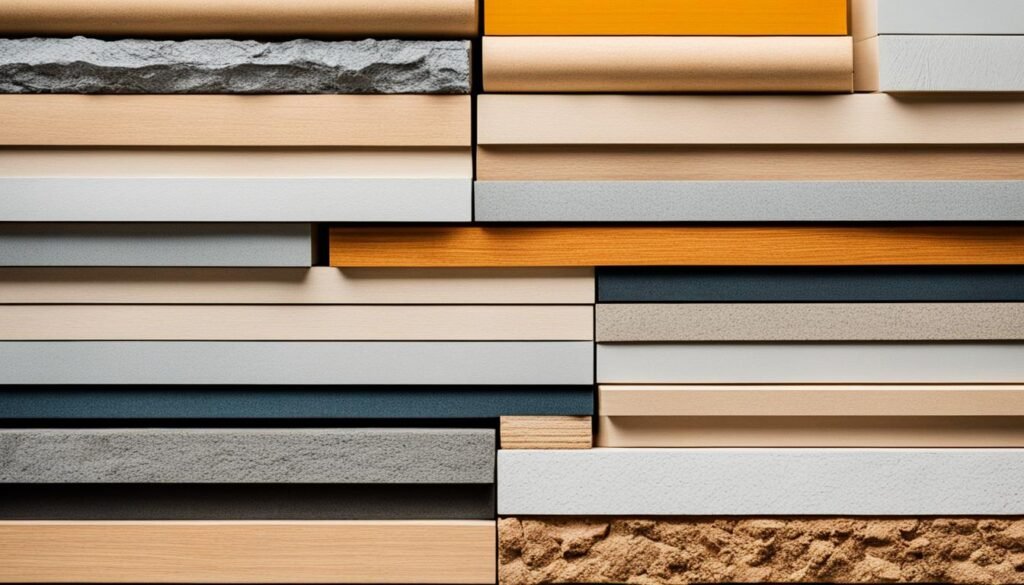
The future of architectural materials and design is an exciting frontier that is driven by sustainability, innovation, and a commitment to creating a better world. Architects and designers are increasingly seeking eco-friendly materials and practices to reduce the environmental impact of construction projects. By incorporating these sustainable choices into their designs, they are not only creating visually stunning structures but also contributing to a greener future.
One area of innovation in architectural materials is the development of carbon fiber. This lightweight, high-strength material offers new possibilities for creating strong and durable structures while minimizing the use of traditional materials. Carbon fiber’s versatility and sustainability make it an attractive choice for architects looking to push the boundaries of design.
Engineered wood is another material that is gaining popularity in the architectural industry. Made from wood fibers and adhesives, engineered wood provides the beauty and warmth of natural wood while offering superior strength and stability. This sustainable alternative to traditional lumber reduces deforestation and promotes responsible forest management.
As architects strive to create more sustainable and efficient buildings, they are also exploring innovative alternatives to traditional construction materials. For example, sustainable concrete mixes that incorporate recycled materials are being developed to reduce the carbon footprint of building projects. These innovative solutions not only reduce waste but also contribute to the circular economy.
The future of architectural design goes beyond just material choices. It also involves integrating smart technologies and sustainable practices into the built environment. From energy-efficient lighting systems to passive heating and cooling techniques, architects are embracing innovative approaches to reduce energy consumption and create healthier, more comfortable spaces.
Future-forward architectural materials and their sustainable benefits
| Material | Sustainable Benefits |
|---|---|
| Carbon Fiber | Lightweight, high-strength, reduces the use of traditional materials |
| Engineered Wood | Sustainable alternative to traditional lumber, reduces deforestation |
| Sustainable Concrete Mixes | Incorporates recycled materials, reduces carbon footprint |
The future of architectural materials and design is a world where buildings seamlessly blend aesthetics, functionality, and sustainability. It is a world where architects and designers harness innovative materials and practices to create structures that not only inspire but also contribute to a greener and more sustainable future.
Also Read: Cozy Bedroom Interior Design Ideas And Tips
Conclusion
In conclusion, architectural materials are instrumental in the design and construction of buildings. The use of architectural blocks and innovative materials not only opens up new possibilities but also promotes sustainability and forward-thinking designs. Whether it’s utilizing concrete masonry units or incorporating recycled materials, architects have a wide array of options to create structures that are both aesthetically pleasing and environmentally friendly.
By embracing new materials and design techniques, architects can shape the future of the built environment. The constant exploration and utilization of innovative materials enable the industry to stay at the forefront of design and construction. Sustainability is a critical factor in these advancements, as architects strive to create structures that minimize environmental impact while maximizing efficiency and durability.
As the industry continues to progress, the integration of architectural materials, building blocks, innovative design, and sustainability will remain key focal points. Architects play an integral role in shaping the future of the built environment by selecting materials that not only perform well but also contribute to a more sustainable and innovative industry.
FAQs
Q: What is the importance of architectural materials in construction?
A: Architectural materials play a crucial role in construction as they determine the durability, aesthetics, and functionality of a building.
Q: Could you provide a list of common building materials used in construction?
A: Common building materials include glass, steel, bamboo, timber, straw, mud, and ash.
Q: What are the characteristics of a sustainable material?
A: Sustainable materials are those that are eco-friendly, renewable, energy-efficient, and have a minimal impact on the environment.
Q: How do architects use facades in contemporary architecture?
A: Facades are used in contemporary architecture to enhance the aesthetic appeal of buildings and provide thermal insulation.
Q: What are some trends in architectural materials for 2023?
A: In 2023, architectural trends include the use of diverse materials such as glass, steel, and wood, along with a focus on sustainability and innovation.
Q: How do designers update the usage of architectural materials in construction?
A: Designers update the usage of architectural materials by exploring new materials, techniques, and technologies to create innovative and sustainable structures.
Q: Can timber be stronger than steel in certain applications?
A: Yes, timber can be stronger than steel in specific applications due to its tensile strength and load-bearing capabilities.
